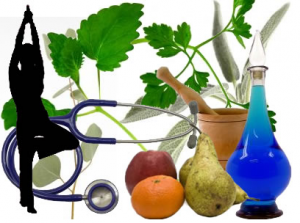
So it’s finally official. Some have been waiting years for it, for simple words giving validity to their professions and recognition for their lives’ work. Some of their predecessors have been waiting centuries.
Harvard researchers admit it now; so do the ever-increasing number of once-skeptical, now-surprised patients. “It works,” they say. “By god, it works.” Such statements, uttered by influential professionals, is helping usher in a new era of modern medicine. The Consortium of Academic Health Centers for Integrative Medicine, which includes such prestigious universities as Harvard, Duke, Stanford, and the University of Texas Medical Branch, released a report announcing — once and for all — that certain “alternative” practices do, in fact, have solid scientific backing.
The fact that a group of respected American medical scientists has come to an agreement on a broader scope of treatments once considered “alternative” could change the healthcare industry, and have important implications for the health insurance industry. The number of complementary clinics has been growing in even typically conservative cities like Austin, Dallas, and Houston; it’s only a matter of time before naturopaths, hynotherapists, herbalists, and acupuncturists are common nationwide.
Though numerous studies have been conducted confirming the efficacy of particular complementary treatments, most of them have been on isolated practices and conditions. To a certain extent, this is necessary — meticulously and slowly separating variables from controls — in order to determine what works from what doesn’t. Brian Berman, director of the Center for Integrative Medicine at the University of Maryland School of Medicine, for instance, led the longest and largest randomized, controlled Phase III clinical trial of acupuncture’s effect on osteoarthritis of the knee. An ancient Chinese practice, acupuncture has been used for more than two millennia to relieve pain, boost the immune system, and treat a variety of ailments via the insertion and stimulation of tiny needles at particular locations on the body. Patients’ pain and knee function were assessed at regular intervals, and final results revealed that acupuncture patients reduced their pain by forty percent, and improved knee function by the same margin.
Other promising analyses on the efficacy of acupuncture include the recent German study that evaluated how well the discipline worked on 1,200 patients with back pain. Like Berman’s study, it was the largest and most extensive attempt to document acupuncture on a certain condition. Half of all patients receiving genuine acupuncture experienced significant pain relief, and only fifteen percent, versus fifty-nine percent receiving conventional treatments, required pain medication.
Commenting on his study, Berman remarked, “These results…indicate that acupuncture can serve as an effective addition to a standard regimen of care and improve quality of life for knee osteoarthritis sufferers. The [National Center for Complementary and Alternative Medicine] has been building a portfolio of basic and clinical research that is now revealing the power and promise of applying stringent research methods to ancient practices like acupuncture.”
Evidently, the Consortium believes — not only in a few treatments, but also in several different types of them. At the top of the Consortium’s list, perhaps not surprisingly, is acupuncture, one the oldest medicinal methods on the planet. Other favorites on the Consortium’s list were calcium, magnesium, and vitamin B6 for pre-menstrual syndrome, St. John’s Wort for depression, guided imagery for pain and anxiety, and glucosamine for joint pain.
Calcium, magnesium, and vitamin B6 “can have a huge impact on moodiness, bloating, and on heavy periods,” said Dr. Tracy Gaudet, executive director of Duke Integrative Medicine at Duke University Medical School.
While the herb St. John’s Wort has been studied with mixed results over the last several years, it is still one of the most commonly prescribed remedies for depression in Europe, and was ranked as the third best alternative treatment by the Consortium. “It’s worth a try for mild to moderate depression,” said Andrew Weil, founder and director of the Program in Integrative Medicine at the University of Arizona. “Remember it will take six to eight weeks to see an effect.”
And glucosamine as a remedy for joint pain has shown remarkable results, as well. Dr. Frederick Hecht, director of research at the Osher Center for Integrative Medicine at the University of California, San Francisco, thinks so. “It’s safe and it looks effective. It may be the first thing that actually reverses cartilage loss in osteoarthritis.”
“Well, we knew that,” said Darryl, massage therapist and long-time advocate of complementary medicine. He sighed. “Why is it that no one listens until it’s almost too late? We’ve been telling people that [glucosamine works on joint pain] for years, and how many have suffered, thinking it didn’t work?”
In fact, one of the major obstacles to the efficacy of many complementary practices may not be the disciplines themselves, but the quality of products and practitioners used. Herbs, for instance, must be sourced from a quality plant and grown in the proper environment, with the proper care, to ensure all components are of the highest potency. They must be stored properly, which includes accounting for materials, light, and temperature, manufactured carefully to preserve the delicate chemical balances, and taken at the right time, at the right dosage. Picking up a low-quality glucosamine supplement, for instance, may not yield the same positive results a better quality product would.
“The biggest mistake people make is they don’t get a good product,” said Mary Hardy, medical director of the Sims/Mann – UCLA Center for Integrative Oncology. The Consortium’s website provides a resource for finding certified practitioners from reputable schools.
Hardy’s statement raises an interesting question. Could previous studies on herbs and other complementary practices be influenced by the quality of the product? Could some analyses’ negative results be a result of low-grade sources? Controlling for quality, rather than for just consistency alone, may provide different outcomes.
“Well, we’re getting there,” said Darryl. “It may not be entirely accurate to try to test non-Western practices with Western techniques, but at least they’re trying to validate what most of us already know. It’s just too bad they didn’t do it years ago.” He smiles. “I might have been making a better living if they had.”

Source by Patt Carpenter
 Vitamin Agent The Health & Naturalistic Source
Vitamin Agent The Health & Naturalistic Source



